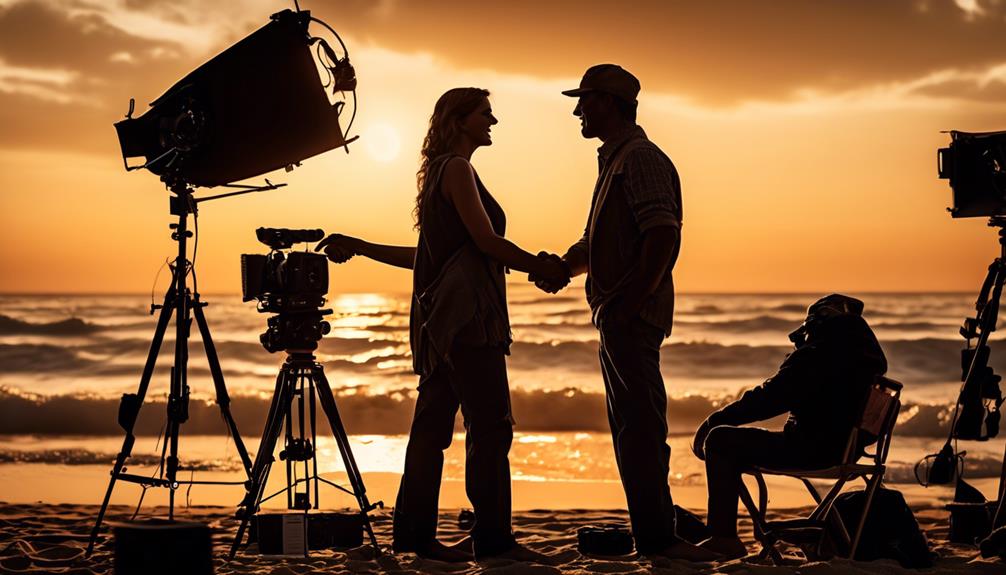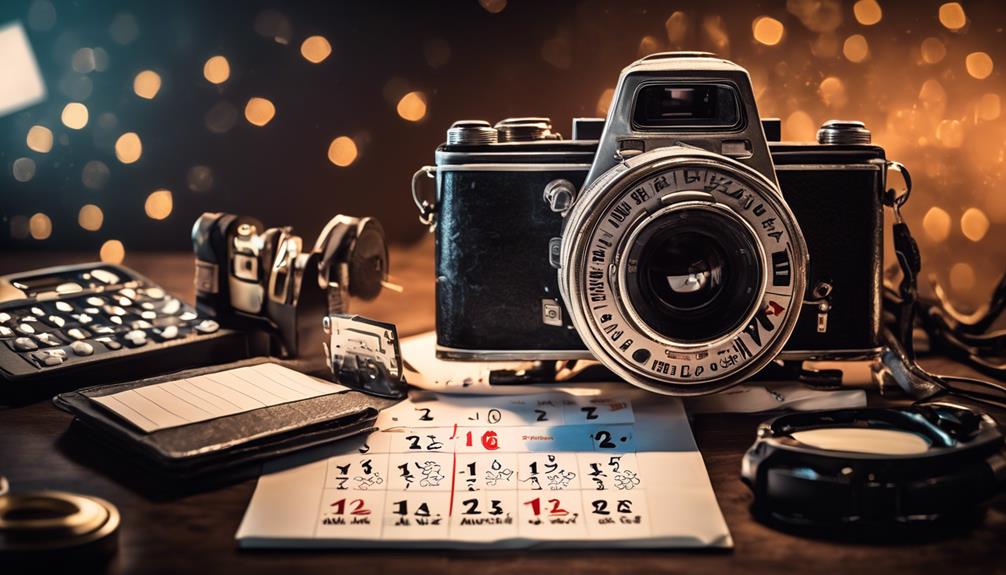Please note this post may contain affiliate links picked by me (Jay) that I have deemed may be of interest or relevant to you the reader of this.
These links do not affect the cost of the thing if you decide to purchase but i may get a little money if you choose to purchase.
For more information on my affiliate link policy click here.
Navigating the world of photography client relationships is like walking a tightrope; it requires a keen balance of professionalism and personal touch.
I've learned that open, clear communication isn't just a nicety—it's the cornerstone of trust.
By personalizing each client's experience, I can make them feel valued, turning one-time clients into repeat customers and vocal advocates.
Meanwhile, efficient workflows ensure that I'm delivering exceptional service without missing a beat.
But it doesn't stop there; gathering feedback, and more importantly, acting on it, shows that I'm committed to growth and client satisfaction.
Stick with me, and I'll share how these strategies can transform your interactions and elevate your photography business to new heights.
Establish Clear Communication

To build a foundation of trust with your photography clients, it's crucial to establish clear, open lines of communication right from the get-go. I've found that being upfront about what they can expect from our collaboration sets the stage for a smooth, enjoyable experience for everyone involved.
Diving into the heart of client expectations isn't just about delivering stunning images; it's about crafting an innovative journey together, ensuring we're both on the same page every step of the way.
I'm always keen to respond promptly because I know response time is more than a courtesy—it's a statement about professionalism and reliability. In this fast-paced world, my clients appreciate quick, efficient communication that doesn't leave them hanging. Whether it's a simple acknowledgment of their message or an in-depth answer to their queries, I'm there to keep the dialogue flowing.
Engaging with my clients in this enthusiastic and personal manner not only fuels my creative process but also empowers them to share their vision without hesitation. It's this kind of synergy, fostered through innovative, crystal-clear communication, that turns a mere photoshoot into a memorable, impactful experience.
Personalize the Experience
Crafting a unique photography experience for each client, I delve into their personal story and vision to ensure their session is as one-of-a-kind as they are. I'm all about relationship building, and that means going beyond the camera to truly understand who's in front of my lens.
Here's how I make it happen:
- Client Surveys
- *Before the Shoot*: I send out thoughtfully designed surveys to gather info on their preferences, style, and the mood they're after.
- *Creative Collaboration*: Their input becomes a launchpad for my creative process, ensuring the photos we create together resonate on a personal level.
- *Post-Session Feedback*: I always follow up for insights that can tailor future experiences even more closely to their desires.
Implement Efficient Workflows

How can I capture the essence of a moment if I'm bogged down by disorganized processes? That's why I've honed efficient workflows that keep the focus on creativity and client satisfaction. Streamlining tasks allows me to stay in the zone, snapping shots that resonate with emotion and authenticity.
Introducing a client portal transformed my interactions with clients. It's a centralized hub where they can view their photos, provide feedback, and access important documents. It's innovative, sleek, and incredibly convenient for both of us. Instead of back-and-forth emails, everything's at their fingertips, and I'm not stuck at my desk sorting through a cluttered inbox.
Automated scheduling is another game-changer. Clients book their own sessions based on my real-time availability. It means no more scheduling conflicts or endless phone tag. I'm alerted instantly, and I can plan my day around shoots, not administrative tasks. This efficiency isn't just about saving time; it's about elevating the entire photographic experience. It ensures that when I'm with my clients, I'm 100% there, ready to capture their stories with my lens.
That's the power of efficient workflows – they free me to do what I do best.
Gather and Act on Feedback
While streamlining tasks has allowed me to be fully present for each click of the shutter, I've also discovered that actively seeking and incorporating client feedback is crucial for continually refining my craft and strengthening those all-important client relationships.
So, how do I tap into the goldmine of client insights? Here's my game plan:
- Client Surveys
- *Post-Session Questionnaires*: I send these out to gather initial impressions while the experience is fresh.
- *Yearly Feedback Forms*: To track long-term satisfaction and identify any shifts in preferences or expectations.
- Feedback Analysis
- *Identify Patterns*: I look for common threads that can signal areas for improvement.
- *Spot Unique Insights*: Sometimes a single piece of feedback sparks a revolutionary change in my approach.
- Actionable Steps
- *Implement Changes*: No feedback is too small to consider. Each piece is a stepping stone to better service.
- *Follow-Up*: I reach out to those who've contributed their thoughts to show how their input has shaped my business.
I'm genuinely excited about this process! It's not just about fixing what might be wrong—it's about pushing the boundaries of what's possible in photography. Feedback isn't just noise; it's the melody I dance to in the darkroom of innovation.
Frequently Asked Questions
How Do I Handle a Situation Where a Client Is Unhappy With the Final Photos Due to Stylistic Preferences?
When I'm faced with creative differences, I embrace conflict resolution wholeheartedly. I listen to their concerns, reaffirming that their satisfaction is my priority.
Finding a common ground is key—I offer to tweak the photos or discuss alternative solutions. I'm always keen to innovate, ensuring the final outcome resonates with their vision.
It's about fostering a partnership where both our stylistic preferences shine through. It's a challenge, but one I tackle with positivity and openness.
What Should I Do if a Client Consistently Requests Additional Edits or Shots That Were Not Part of the Original Contract?
As they say, 'give them an inch, and they'll take a mile.' When a client consistently asks for more, I don't hesitate to set boundaries.
My revision policies are crystal clear from the get-go, ensuring we're on the same page. It's all about balance—being flexible yet firm.
After all, innovation thrives not in endless edits, but in respecting the creative process and the initial vision we agreed upon.
How Do I Approach Pricing Discussions and Negotiations With Clients to Maintain a Professional Relationship?
I'm always upfront about my rates, ensuring transparent pricing from the get-go. When negotiating, I'm keen to justify the value I offer, highlighting my unique skills and the innovative edge I bring to each shoot.
It's about striking a balance—valuing my work while respecting the client's budget. Open communication is key, and I find that being both flexible and clear about costs helps maintain a solid, professional rapport.
How Can I Effectively Manage a Situation Where a Client Is Late or Misses a Scheduled Shoot Without Damaging the Relationship?
When clients are late or miss shoots, I stay calm, patient, and proactive. I've honed my communication skills to negotiate rescheduling smoothly, incorporating client incentives to ensure commitment.
What Are Some Strategies for Dealing With Clients Who Do Not Respect My Time Boundaries, Such as Contacting Me Outside of Business Hours?
I've found that setting clear communication policies from the start is key.
I educate my clients about my availability, gently reinforcing my time boundaries.
It's about striking a balance—staying approachable yet professional.
When they reach out after hours, I acknowledge their message and specify when I'll respond during working hours.
It's about fostering respect with a smile; this way, we maintain a harmonious and innovative collaboration that values everyone's time!
Conclusion
In wrapping up, I've learned that building solid relationships with my photography clients is like crafting a perfect shot—it's all about the right balance. By maintaining clear communication, personalizing their experience, streamlining my workflows, and actively seeking out feedback, I create lasting connections.
Take Sarah, for instance, a bride whose wedding I shot last summer. By implementing these strategies, I not only captured her dream day but also gained a friend and a repeat client. It's truly a win-win!


